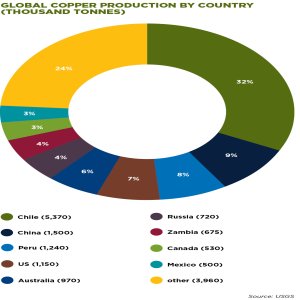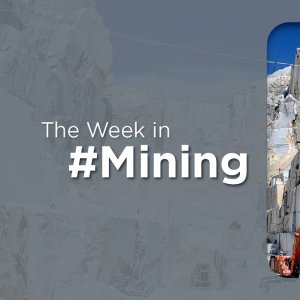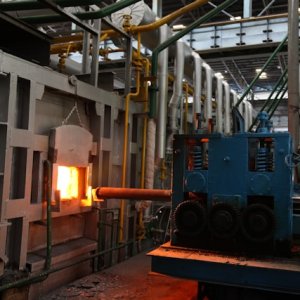Industry View on Environmental Responsibility

STORY INLINE POST
Q: What global environmental standards have been adopted by Mexico’s mining industry and how have they impacted the country’s competitiveness?
A: The Mexican mining industry has adopted many environmental norms and guidelines that are similar to those in more developed countries. Due to the competition with other mining countries that Mexico faces, the environmental requirements are practically the same. Mining companies actively work with the authorities to put together environmental conservation and preservation plans, in a joint exercise that ends with the creation of regulations that are then further revised by different working groups. After such revisions, the official regulations are issued. They must be practical and economically feasible while at the same time bringing benefits to the industry through clear rules and legal certainty. They must also reassure the public that the mining industry is clean and actively working to preserve the environment. This is why we believe that Mexico can compete with any other country in terms of its regulatory framework, as well as in other aspects of mining.
Q: What are the main environmental challenges that the Mexican mining industry is currently facing?
A: Something that has been concerning both authorities and mining companies is greenhouse gas emissions, which cause global warming and have an impact all over the planet. Mining groups are involved in the development of alternative power generation sources to reduce the emissions they generate. For example, some companies are employing solar panels or wind farms to generate a proportion of the energy their mining operation requires. Since this will not be enough to power their entire operation, many companies are compensating their greenhouse gas emissions through extensive reforestation programs. Tree planting captures carbon dioxide and compensates for the large amount of pollutants that are being released into the atmosphere. After the army, the mining industry plants the largest number of trees in Mexico.
Q: How do Camimex and the Ministry of the Environment and Natural Resources (Semarnat) work together to create an energy efficient industry, without creating an additional financial burden for the private sector?
A: Camimex and mining companies work towards reaching an understanding of Semarnat’s demands and ensuring that its requests are technically and environmentally viable. Semarnat is the authority that issues the Mexican official standards (NOMs) and evaluates the environmental impact, risks and land use studies, among others, that must be completed for permits and licenses to be granted so that a mining company can begin to develop a project. It is also the body that monitors control systems for the materials being used and produced, as well as emissions and waste that are generated. The Commission has a close ongoing relationship with Semarnat, especially with Profepa, the inspection and monitoring branch that visits mining companies regularly to ensure that they are complying with the law. Due to the different functions of the mining industry and environmental authorities it is impossible to have perfect information about every development. For this reason there are sometimes discrepancies between the two institutions, though we always manage to find consensus for the sake of the industry’s improvement. It is important to recognize that the environmental authorities in Mexico give Camimex a preferential place in the regulation committees. For example, the Advisory Committee on Environmental Regulation recognizes that Camimex is qualified to suggest regulations or guidelines that safeguard the environment.
Q: What have been the most representative achievements of the Camimex Environmental Commission in its cooperation with the public and private sectors on the development of environmental standards?
A: We have achieved consistency in the government requirements regarding the issuance and publication of official standards for mining. I am not sure if there is another industry that is as heavily regulated as the mining industry. Our greatest achievement has been the joint work we have done with the authorities in order to demonstrate the way in which the industry can best be regulated to become increasingly environmentally friendly. Previously, the authorities could send someone without much knowledge of mining activities to supervise operations. Misunderstandings arose as a result of the supervisor not having the required knowledge or training to evaluate accordingly. Thanks to effective communication, common ground has been found, which will allow the industry to be efficiently regulated. Another great achievement has been the national forums through which the benefits of mining are disseminated. We have a good image among the authorities, but not such a great image with society in general. We have a lot of work ahead of us to improve our image with the Mexican public.
Q: Which environmental regulations could potentially represent a major challenge for mining companies working in Mexico?
A: It is possible that there might be changes to Mexico’s environmental regulation in the future. When this happens, it will happen gradually because the authorities are aware that it is not easy to adapt technology to new official standards. Every five years standards are reviewed and, depending on the existing technologies, new measures might be established. Another interesting subject is hazardous waste management. Currently, reuse, recycling, and energy recovery from waste are considered to be the appropriate handling of waste. In case waste is not reused, the material should be stored for eventual disposal. There are cases of companies that do not have an authorized storage facility for the disposal of hazardous waste, and they face the challenge of finding a third party that is prepared to handle and store this material for them. The authorities have growing concerns about this issue and I believe it will become a relevant subject very soon.
Q: What is your outlook on the development of environmental assessment procedures for the mining industry, and what ambitions does Camimex have to contribute to this development?
A: We want every Camimex affiliate to have its Clean Industry (Industria Limpia) certification and to be part of the environmental leadership program, which means using suppliers that also have eco-friendly policies and comply with environmental requirements. Another measure that is currently being encouraged is for mining operations to have their own greenhouses, in order to restore vegetation in areas that have been altered by mining activities or by the activities of satellite companies that service the industry. All of these measures aim to achieve public recognition and improve the industry’s image.




















